It’s snowing in Colorado today. Don’t gloat too hard, though, those of you who live in warmer climes. I bet you’ve never seen a flower made spontaneously from frost! (Neither have I–they’re rather rare. I’m still looking though.)
When I climb mountains, I marvel at how much beauty goes unnoticed. Whole valleys of wild flowers never get seen unless a hiker wanders off the trail. Or think of all the coral reefs in the ocean yet to be discovered, with gorgeous tropical fish flitting around unobserved. “Beauty and grace are performed whether or not we sense them,” says Annie Dillard. “The least we can do is try to be there.”
Frost flowers may be forming somewhere in the world right now. I wonder if anyone will notice. This is from a recent blog I came across.
“The Incredible Frost Flower” *
It is as beautiful as it is rare. A frost flower is created
on autumn or early winter mornings when ice
in extremely thin layers is pushed out from the stems
of plants or occasionally wood.
This extrusion creates wonderful patterns which curl
and fold into gorgeous frozen petioles giving
this phenomenon both its name and its appearance.
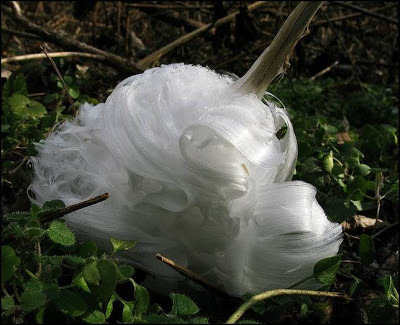
Conditions have to be just so …for frost flowers to form.
Early winter is the optimum time to come across them
…as although the weather conditions
must be freezing it is vital that the ground is not,
so water can be sucked up in the stem.
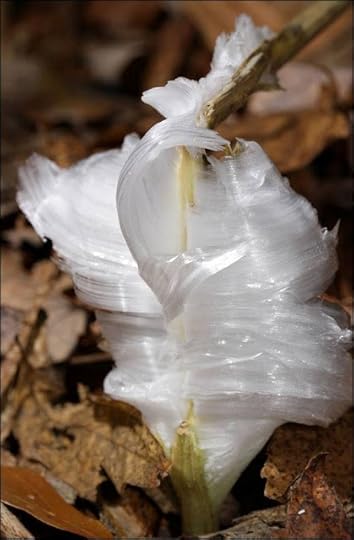
As the temperature gets to freezing or just below
…the sap in the stem of the plants will expand.
As it does so, the outer layer of the stem comes under
increasing pressure, and microscopically thin cracks,
known as linear fissures, begin to form. These will
finally give way under the pressure of the sap and split open,
forming cracks for the water to come out through …
and then freeze.
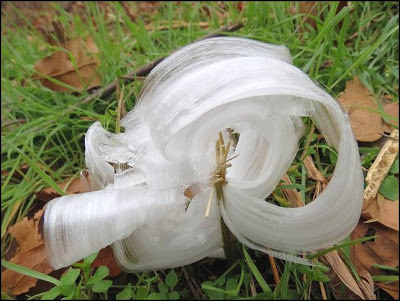
Water is continuously being drawn up the plant’s
stem while the ground remains unfrozen.
It travels up the plants external structural axis (stem!)
and reaches the split or splits.
As it does so, it oozes slowly out and it freezes.
Yet more water is coming behind it….

This new water reaches the cracks and it too freezes,
pushing the previous slither of ice away from the stem.
And in this manner the amazing ‘ petals ‘ that you see
in these pictures are formed.
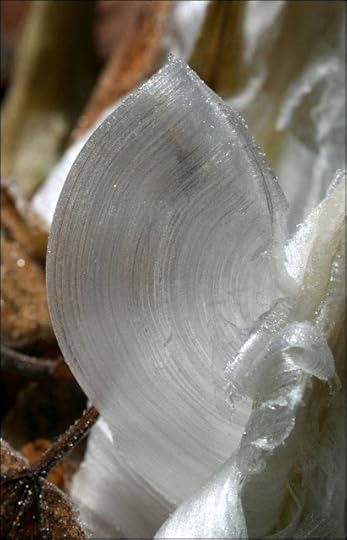
Incredibly, the frost flower effect can happen to wood
even when it has been made in to a fence or a gate,
as seen above. In this case the water is extruded through
the pores in the wood rather than cracks.

The frost flower has a number of other names:
you may know them as frost castles, ice castles,
ice blossoms, or even the very scientific-sounding
Crystallo-folia.
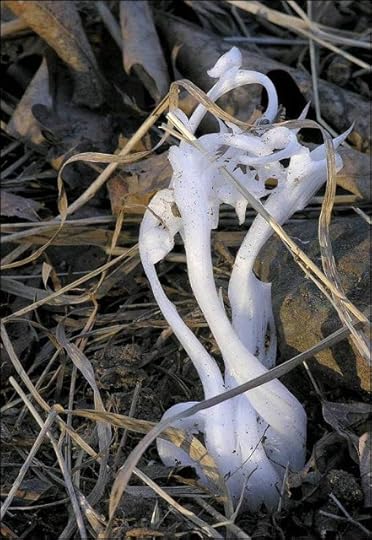
Yet the name is something of a misnomer: frost is
created by water vapor.
Frost flowers, on the other hand, are formed from
liquid water.

If you come across one – be careful!
Rather than attempt to pick it up, if you have a camera
or a phone with you …take a picture instead.
Frost flowers are incredibly delicate and will more often
than not shatter when touched.

Not only that, as they are made of such thin sheets
of ice, they will melt away as the sun rises higher
in the sky.
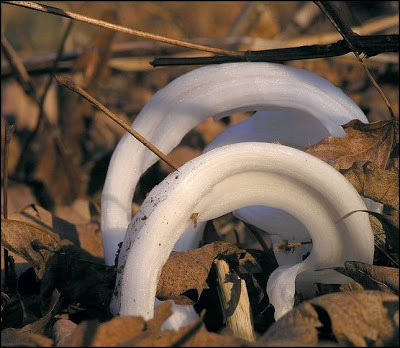
You may get frost flowers again the following day,
but unless the conditions are just right
the chances are… your first glimpse may be your last.
*Reprinted from the blogspot http://best-of-stories-etc.blogspot.c...
 newest »
newest »
 newest »
newest »
 In all my years, of which there are many, I have never heard of frost flowers, or ever seen one. I will be on the look out now!
In all my years, of which there are many, I have never heard of frost flowers, or ever seen one. I will be on the look out now!













